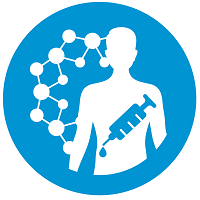Preclinical, Clinical, and Translational Sciences
Symposium: Translational Development of Diverse Drug Formulations
Predicting Human Subcutaneous Bioavailability of Monoclonal Antibodies Using an Integrated In-Vitro/In-Silico Approach
Wednesday, November 12, 2025
10:30 AM - 11:00 AM CT
Location: 225 AB

Jenna Caldwell, PhD
Associate Principal Scientist
AstraZeneca
Speaker(s)
Understanding the in vitro – in vivo correlation (IVIVC) /relationship (IVIVR) for subcutaneous (SC) drug delivery remains a major challenge in drug development. Unlike oral drugs, where established frameworks and regulatory guidance support predictive modeling, SC drugs face additional complexities such as immune reactions, tissue retention, and stability issues—particularly for biologics. Monoclonal antibodies (mAbs) are increasingly administered via SC injection due to the convenience and patient adherence benefits. However, accurately predicting SC bioavailability in humans remains a challenge, as traditional animal models fail to provide reliable predictions for clinical outcomes, creating a significant gap in preclinical evaluations.
To address this, we have developed an integrated in vitro/in silico approach that summarizes the release and transmission profiles information generated when mAbs are injected into the Subcutaneous Injection Site Simulator (SCISSOR) platform. We conduct functional principal component analysis (FPCA) of the SCISSOR transmission and release profiles, then use the resulting FPC scores, representing the major sources of variation among the molecules’ SCISSOR profiles, as inputs to a machine learning model to predict human SC bioavailability. Because of the small sample sizes intrinsic to this field of study, we use self-validated ensemble modelling (SVEM), a technique mimicking the benefits of cross-validation for small datasets. The model was tested on unseen data for four commercial mAbs and demonstrated a good agreement between the predicted and actual bioavailability. Notably, the results of this in vitro/in silico model outperformed estimates of clinical bioavailability from non-human primates. To build towards a mechanistic understanding, we also investigated the relationship between SCISSOR release and transmission and differences between molecular and formulation properties of the mAb drug products. This approach represents a valuable addition to the toolkit for predicting the SC human bioavailability of mAbs. By combining in vitro and in silico methods, we offer an approach that can provide early insight into mAb SC bioavailability beyond that provided by preclinical animal models.
To address this, we have developed an integrated in vitro/in silico approach that summarizes the release and transmission profiles information generated when mAbs are injected into the Subcutaneous Injection Site Simulator (SCISSOR) platform. We conduct functional principal component analysis (FPCA) of the SCISSOR transmission and release profiles, then use the resulting FPC scores, representing the major sources of variation among the molecules’ SCISSOR profiles, as inputs to a machine learning model to predict human SC bioavailability. Because of the small sample sizes intrinsic to this field of study, we use self-validated ensemble modelling (SVEM), a technique mimicking the benefits of cross-validation for small datasets. The model was tested on unseen data for four commercial mAbs and demonstrated a good agreement between the predicted and actual bioavailability. Notably, the results of this in vitro/in silico model outperformed estimates of clinical bioavailability from non-human primates. To build towards a mechanistic understanding, we also investigated the relationship between SCISSOR release and transmission and differences between molecular and formulation properties of the mAb drug products. This approach represents a valuable addition to the toolkit for predicting the SC human bioavailability of mAbs. By combining in vitro and in silico methods, we offer an approach that can provide early insight into mAb SC bioavailability beyond that provided by preclinical animal models.
Learning Objectives:
- Upon completion, participant will be able to assess IVIVC/IVIVR provided by state-of-the-art in vitro tools when making subcutaneous drugs.
- Upon completion, participant will be able to determine how in vitro tools can provide insight into mAb formulation behaviour relevant to subcutaneous behaviour.
- Upon completion, participant will be able to plan in vitro functional assays for subcutaneous drug development.

